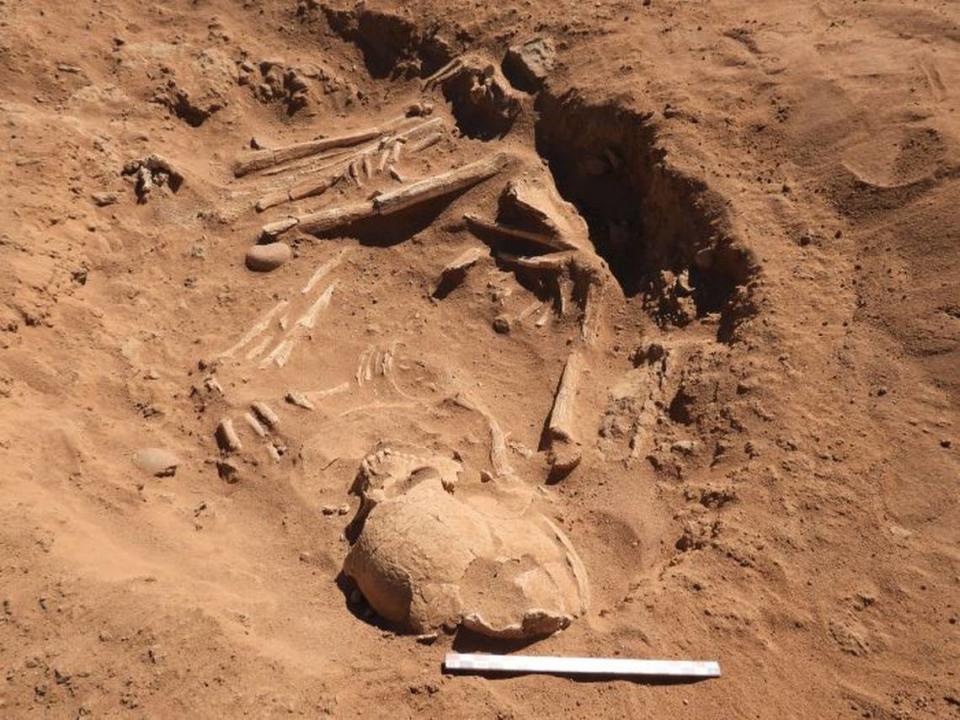7,000-year-old cemetery — with bone tools — uncovered in Sudan. Take a look
Looking out across the desert landscape of northern Sudan, it’s easy to imagine what the arid land looked like several millennia ago. Herds of cattle would pass through, drawn to the lush banks of the Nile River. Communities of people would settle along this intersection of water and wildlife.
A truck driver was involuntarily reminded of this ancient time while doing construction work in the Letti Basin, Science in Poland said in a Thursday, March 23, news release. The wheel of the truck fell into a hole, and when the driver tried to drive out, the truck threw human bones and ceramics to the surface.
As archaeologists soon realized, the construction crew had stumbled upon a 7,000-year-old burial chamber.
Excavating the area, archaeologists found a cemetery rich with grave goods. The burials belonged to some of the region’s first cattle breeders.
At one very deep burial pit, archaeologists uncovered the remains of a tall elderly man covered in fragments of animal skin. The animal skin had been colored with a red mineral known as ochre, the release said.
Ochre is a type of dye used since the cave paintings of the Paleolithic era, experts said. The dye is commonly associated with religious beliefs, such as in burials.

The pit grave also contained a bowl and five bone blades of varying sizes. Photos show these bone tools, including a pointed funnel.
The tools immediately drew the attention of researchers, Piotr Osypiński, one of the excavations’ lead archaeologists, told Science in Poland. The tools were sharpened while preserving the original shape of the bone.

Experts believe these tools were used for cattle bloodletting, the release said. The custom of bleeding cows is still practiced today by the Maasai people of Kenya and Tanzania, Osypiński said.
For the Maasai people, cow’s blood is “both ordinary and sacred food,” Atlas Obscura reported, and is “considered beneficial for people with weakened immune systems” with its high amount of protein. The blood may be consumed by itself, mixed with milk or added in other cooked dishes. The process of cattle bleeding involves nicking the animal’s neck, collecting the blood in a bowl and then clotting the wound so it heals properly.
Archaeologists think the tools found at the Letti Basin cemetery may be the oldest evidence of this cultural practice, Osypiński said in the release.
Researchers did not explain why the tools were buried at the cemetery.

More bone blades were uncovered at another burial in the cemetery. This small oval burial had the remains of a young man curled in a fetal position. The deceased, with a small, precisely cut hole in his skull, was covered with an animal skin dyed in ochre.
The hole in the man’s skull may have been related to his death, the release said. It’s unclear if this hole was cut as part of a surgical procedure or a religious practice.
Cattle bones were also unearthed from the cemetery, archaeologists said. The collection of graves has provided insight into the region’s ancient pastoral communities.
Previous excavations at the Letti Basin found evidence that the region’s occupants domesticated cattle beginning 10,000 years ago, according to a June news release from Science in Poland. This challenged preexisting theories that domesticated cattle came to East Africa from Turkey and Iraq.
The Letti Basin is along a horseshoe-shaped bend of the Nile River in northern Sudan. Nizeiza, a city located on the southernmost part of the basin, is about 215 miles northwest of Khartoum, the nation’s capital.
Google Translate was used to translate the news release from Science in Poland (PAP).
Stone from pharaoh’s temple — over 2,500 years old — uncovered in Sudan, photos show
Public spa or elite mansion? 1,800-year-old Roman complex poses mystery in France
‘Colorful’ 1,700-year-old mosaic floor again emerges from growth by Israel hiking trail

 Yahoo Movies
Yahoo Movies 